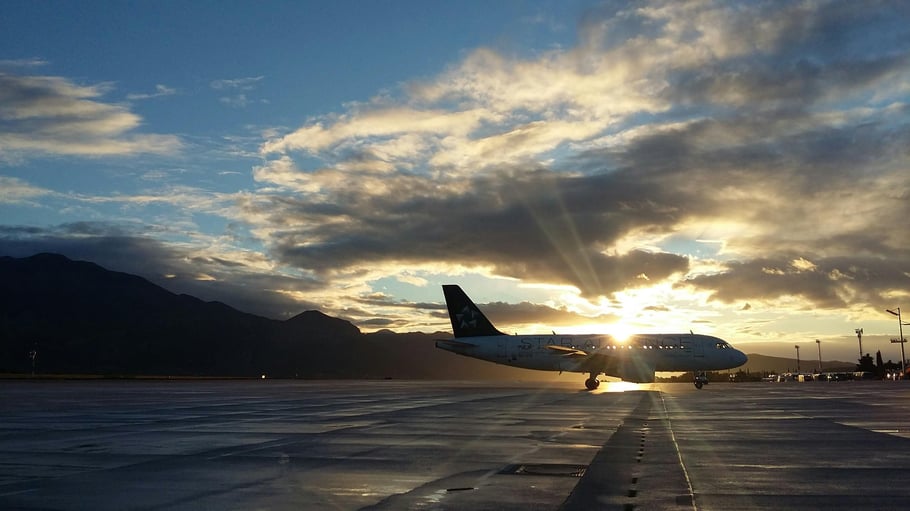Antom spoke at the Airline Reporting Corporation (ARC) Payments Forum on 27 April 2025. As we shared Antom's comprehensive future-ready airline payment solution during the event, we also noted the following four recurring themes driving seamless payments in the travel industry:
1. Rise of alternative payment methods (APM)
Like in many other industries, the rise of alternative payment methods has also been well noted in the travel industry over the last few years. According to BCG Global Payments Model, 30% of global payments will be non-cash payments by 2027. From e-wallets to next-gen bank transfers, account-to-account (A2A) and real-time payments (RTP), to Buy Now Pay Later (BNPL), loyalty programmes and cryptocurrencies, new payment instruments are rising in popularity.
Perhaps calling them alternative may start to sound inaccurate now, as several APMs have become common payment methods for travellers; quoting our presenter and US BD Lead, Sandra Li, "These are not APMs, these are our primary forms of payment now". This sentiment also resonated among the attendees at the forum.
In Southeast Asia, for instance, APM has grown exponentially. The Philippines leads the way for mobile wallets with 63% adoption rate. Meanwhile, real-time payments volume in Indonesia is leapfrogging ahead even though RTP was launched in Indonesia only in 2021.
The rise of alternative payment methods is an important trend for travel, as this means airlines and travel merchants can offer these payment methods to help increase sales conversion and enhance overall travel experiences. For Southeast Asia, this also indicates a shift towards digital payments and away from cash, giving businesses an opportunity to create better experiences by leveraging payments insights.
2. Demand for cross-border interoperability
The demand for seamless travel is perhaps as old as the travel industry. As any traveller will share, being able to travel without any friction can elevate travel experiences. Cross-border interoperability require service providers, government agencies and regulatory bodies to come together, and have improved significantly over the last decade to facilitate trans-region trade and travel.
EU's SEPA (Single Europe Payments Area) and PSD2 (Revised Payments Directive) are some examples. SEPA provides standardized payments instruments so travelers, whether domestic or international, can pay like they do at home. PSD2 enhances payment security and innovation including Strong Customer Authentication (SCA) to ensure secure transactions. PSD3, an update to PSD2, is expected to be published in 2025 to further ensure payments security.
Similarly, in Southeast Asia, several nations have already forged bilateral linkages between their national RTP systems, enabling both online and physical transactions across borders. The growth of digital payments in the region further drives and boosts these efforts.
Ant International's Alipay+, a unified wallet gateway with cross-border payment and digitisation services, was conceptualised with seamless trade and travel in mind. Currently, Alipay+ connects 90+ million merchants to 1.6 billion user accounts.
These numbers continue to grow as Alipay+ works with more payment partners across the world, adding more payment methods to the platform, and making payment easier for businesses and consumers alike.
Want to know how you can leverage Ant International's solutions for travel business? Speak with our team today.
3. All-in-one app experience
Seamless travel payments are increasingly inspired by the super app experiences which combines multiple functionalities and services on to one single platform. The all-in-one app experience can provide a lot more convenience and accessibility to travellers. Language barriers and cultural differences can make accessing several services. For instance, just hailing a taxi and paying for the ride can be a challenge for a foreign traveller in China!
Super apps have transformed digital ecosystems by integrating payments, transportation, communication, and other essential services into a single app. This approach has influenced the travel industry and is helping to drive further interoperability – so travellers can easily plan, book and pay.
Functionalities like tax refunds, activity booking and voucher claims – on top of ride-hailing, accommodation and travel bookings and food ordering – as part of an all-in-one app experience will help to enliven the travel experience.
4. Scan anywhere to pay
The role of mobile remains key in the travel industry, where payments can be omnichannel and sometimes across multiple devices. It is very much the connector between online and offline experiences, and is important to link several touchpoints in the user journey such as ticket booking, paying at airport, check-in counter, in-flight shopping etc.
Brands need to consider this "scan to pay" behaviour that's become intuitive for many travellers worldwide. Antom's Scan to Link lets you create unique payment links around users' journeys and channels so it's easy to scan anywhere to pay.
Equipped with mobile wallets including tokenised card payments, and digital wallets, travellers can simply scan QR codes at shops, restaurants, or tourist attractions to make instant payments. Many businesses have also adopted QR technology enabling this seamless omnichannel payment. On top of being a convenient payment option, it also enables fast, secure transactions as verification and authentication can also be done seamlessly as part of the payment process.
Staying ahead of evolving payment trends can be challenging as the digital payment landscape is constantly changing. Plus, with differing payment preferences across markets, international businesses are dealing with a lot of complexities, not to forget having to keep up with fluctuating FX and evolving regulatory requirements.
Antom helps simplify things for international travel merchants including travel and airline merchants with our robust payment platform offering, and products and solutions that extend beyond payments. Speak with our team today to learn more.





